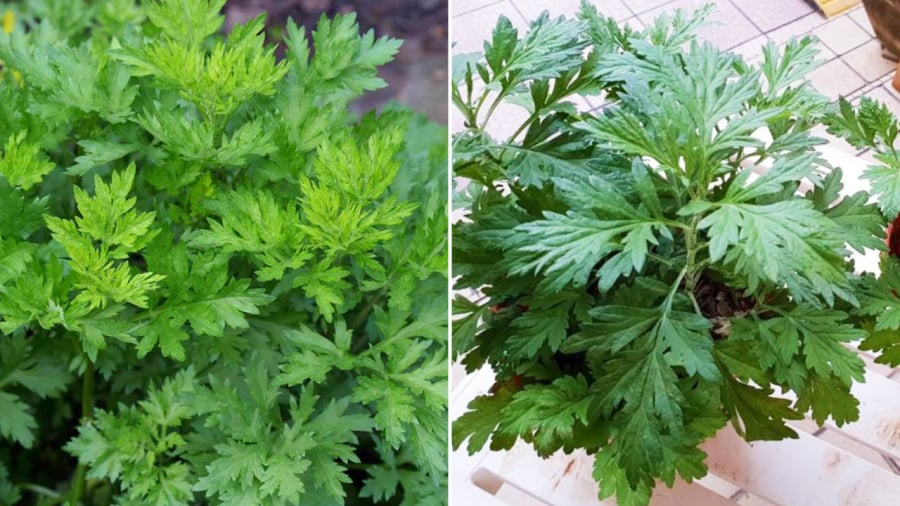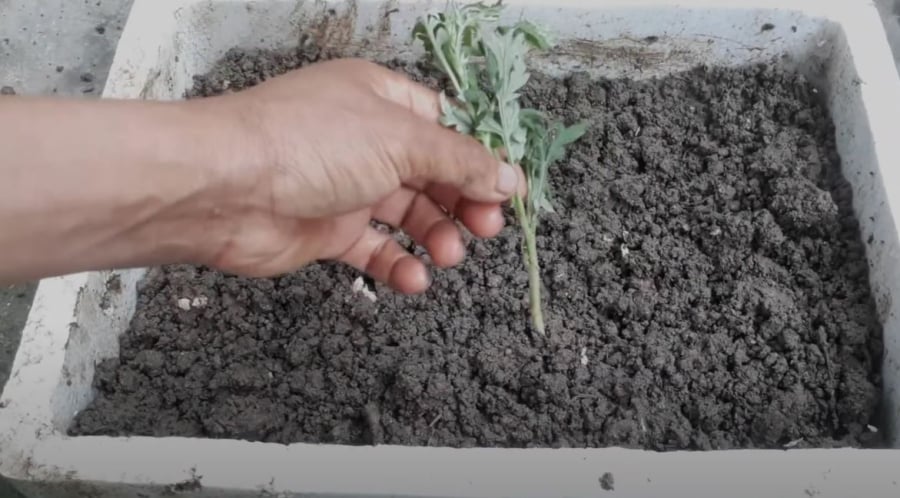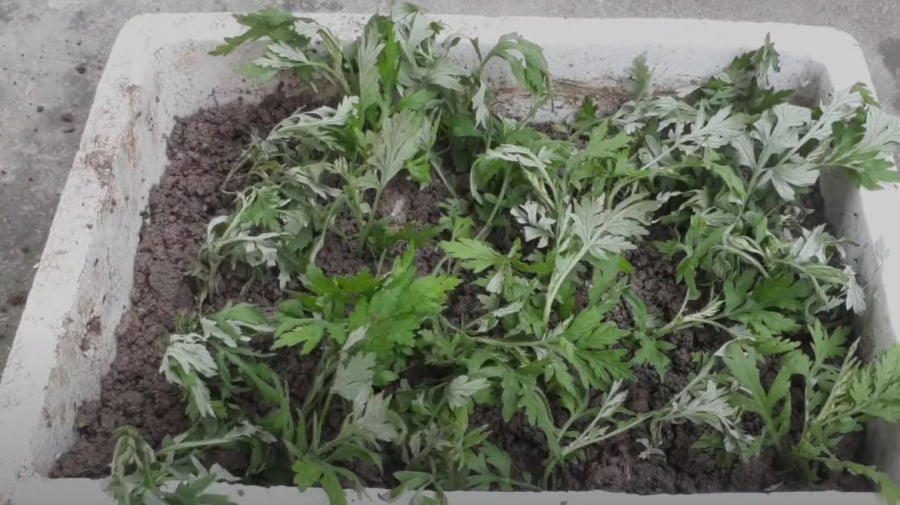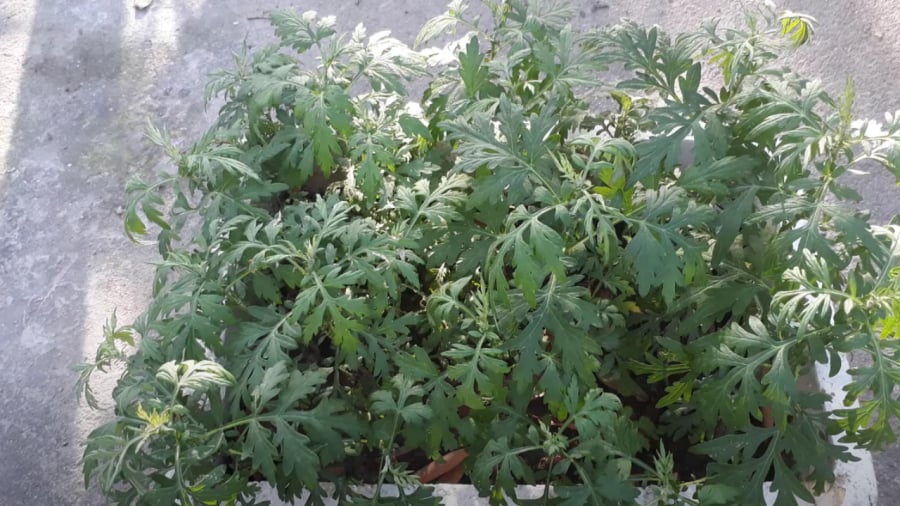Artemisia vulgaris, commonly known as mugwort, is a bitter-tasting herb with a warm, pungent flavor. Aside from being used as a regular vegetable, it is also revered for its medicinal properties and health benefits. Mugwort is believed to regulate blood flow and aid in gynecological conditions, menstruation, and hemostasis.
Preparing mugwort is simple. You can boil fresh mugwort with one to two chicken eggs or braise it with balut; use it in chicken stew or make an omelet with it. These dishes are commonly sold in street-side eateries and can also be easily prepared at home.
Additionally, mugwort leaves are used for steam therapy and foot soaks. When roasted with salt, the leaves can be applied as a hot compress to relax muscles, soothe pains, and reduce belly fat…
You can easily grow mugwort at home to ensure a constant supply of this versatile herb.

There are multiple ways to cultivate mugwort at home.
Growing mugwort can be done in several ways, including sowing seeds, transplanting seedlings, or propagating through cuttings. The quickest and easiest method is through cuttings.
How to Grow Mugwort from Cuttings
– Container and Potting Mix
If you’re growing mugwort indoors without a garden, choose a pot or container with drainage holes to prevent waterlogging and root rot. You can use a standard potting mix blended with organic fertilizers such as cow or chicken manure, or vermicompost.
Alternatively, you can use garden or field soil, which doesn’t need to be purchased from a gardening store. It is recommended to sun-dry the soil for at least ten days before planting to eliminate any potential pathogens.
– Planting Method
Cut a 20-30 cm long stem section from a healthy mugwort plant and insert it into the prepared potting mix. Gently firm the soil around the cutting and water it. Maintain moderate moisture by watering regularly but avoiding overwatering.

Simply insert the cutting into the soil and provide adequate water. With time, roots will develop, and you’ll have a thriving young plant.
Mugwort thrives in sunny conditions, so choose a bright, sunny spot for your plant to encourage faster growth.

As your young plant grows, you can transplant it into larger pots or into your garden to give it more room to spread out.
Water your mugwort twice a day—a thorough watering in the morning and a lighter watering in the afternoon. Adjust the amount of water according to the weather and environmental temperature. For instance, increase watering during hot weather and refrain from watering when it rains.
To boost the growth of your mugwort, you can apply fertilizer. The simplest option is to use well-rotted compost, vermicompost, or chicken manure before planting. Afterward, you can mix vermicompost with a small amount of NPK16-16-8 fertilizer and apply it every 15 days.
Within a month, your mugwort plant should be healthy and robust, with plenty of leaves ready for harvest.

After about a month, you can start harvesting by cutting the tender young shoots, leaving the roots intact. New shoots will grow, allowing for subsequent harvests.
The Magic of Ginger: Unlocking Health Benefits for a Better Night’s Sleep
Introducing the wonders of ginger – a potent root with a plethora of benefits, right at your bedside. Uncover the secrets of this vibrant spice and embark on a journey of wellness. From boosting your immune system to promoting better sleep, ginger is a natural remedy with a kick. Stay tuned as we explore the magic of ginger and how it can revolutionize your health.





































